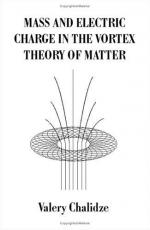|
This section contains 380 words (approx. 2 pages at 300 words per page) |
The concept of electric charges goes back more than 2,000 years to the ancient Greeks. Their word for amber, a resin that had the ability to hold a static electric charge, was elektron, from which the word electricity is derived.
In more recent times, electric charge was studied by Stephen Gray. In 1729 he discovered that rubbing a glass tube created an electric charge that was "conducted" through the tube and into corks at either end. Four years later, French physicist Charles Du Fay (1698-1739) experimented with Gray's concept of conduction and found that twine was an excellent conductor if it was damp; if the twine was dry it inhibited the flow of electric charge and was an insulator.
Du Fay discovered that cork balls with "like" charges repelled each other, while those with opposite charges attracted. He named these two charges "vitreous" and "resinous" electricity.
Great advances in the understanding of electric charge came from the work of Benjamin Franklin. Franklin did, indeed, fly a kite in a lightning storm and was able to draw an electric charge out of the sky and store it in a Leyden jar (an early form of capacitor). He also invented the lightning rod to conduct an electric charge safely into the ground, thereby protecting buildings.
Franklin also investigated the two different electric charges and came to the conclusion that electricity was a fluid that existed as either an "excess" or a "deficiency" in an object. Two objects with identical charges repelled each other, but an object with an excess charge attracted an object that had a deficiency; upon contact the charges would balance out. Franklin concluded that electricity flowed from a positive object (having excess charge) to a negative one (having deficient charge). This was a daring but incorrect conclusion.
In 1897 Joseph J. Thomson discovered a subatomic particle that was dubbed the electron. It was discovered that the flow of electricity was related to electrons that carried a negative charge. In addition, the electron traveled from a negatively charged object to one that was positively charged.
Because Franklin's concept was consistently incorrect, it made no difference to the experiments and their results. Franklin is responsible for establishing the modern concept of positive and negative electric charges and deserves the accolades.
|
This section contains 380 words (approx. 2 pages at 300 words per page) |


